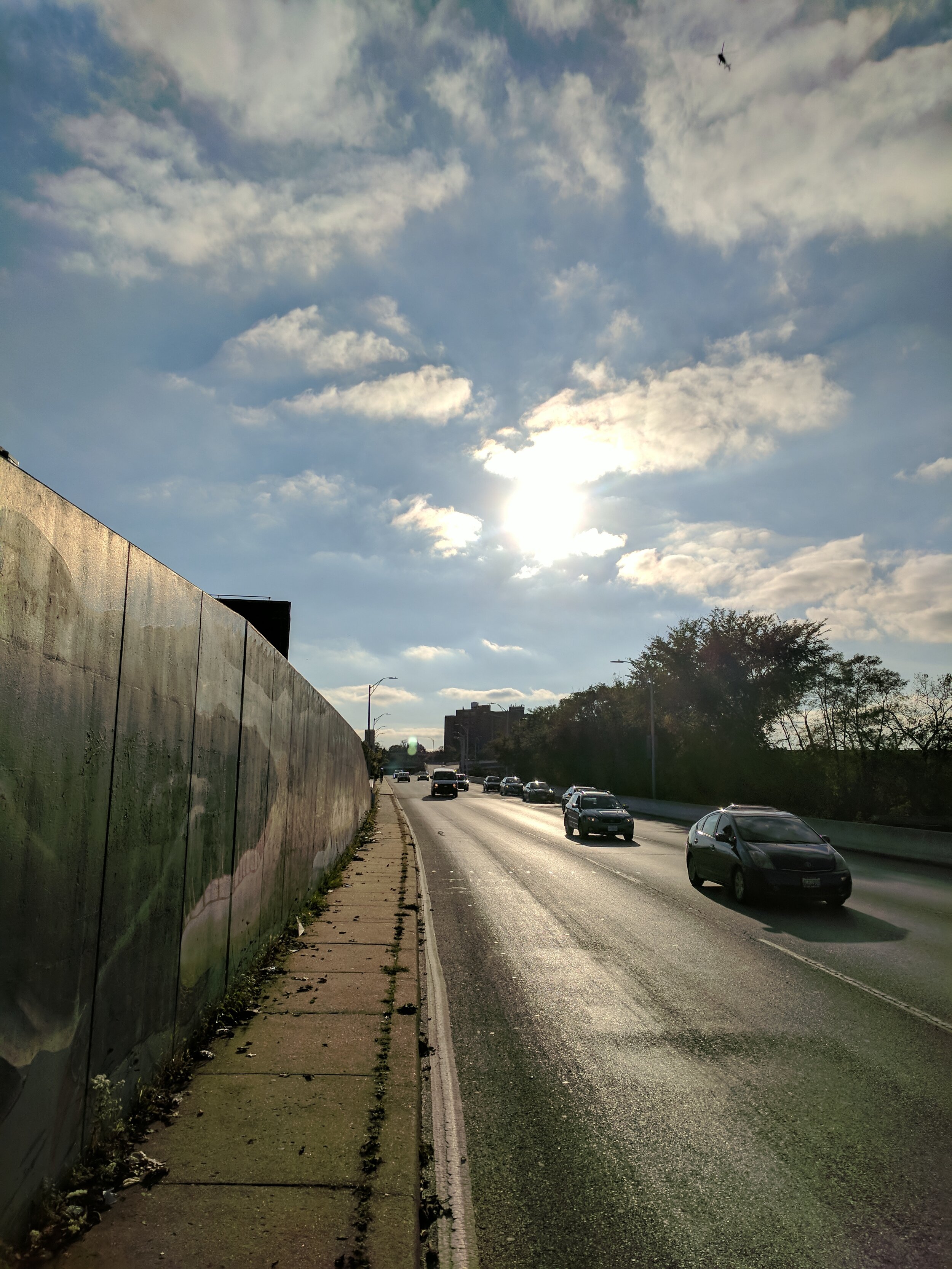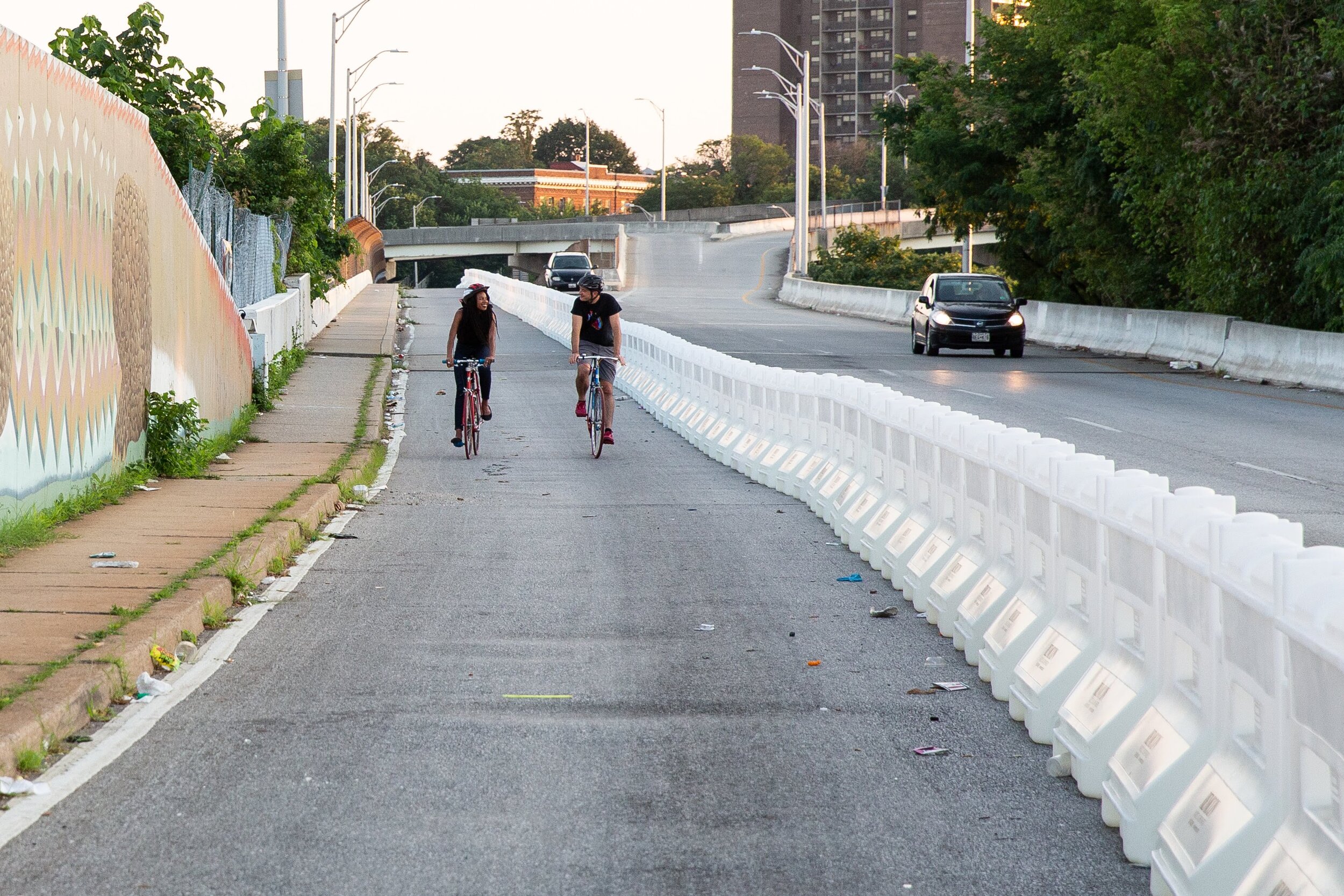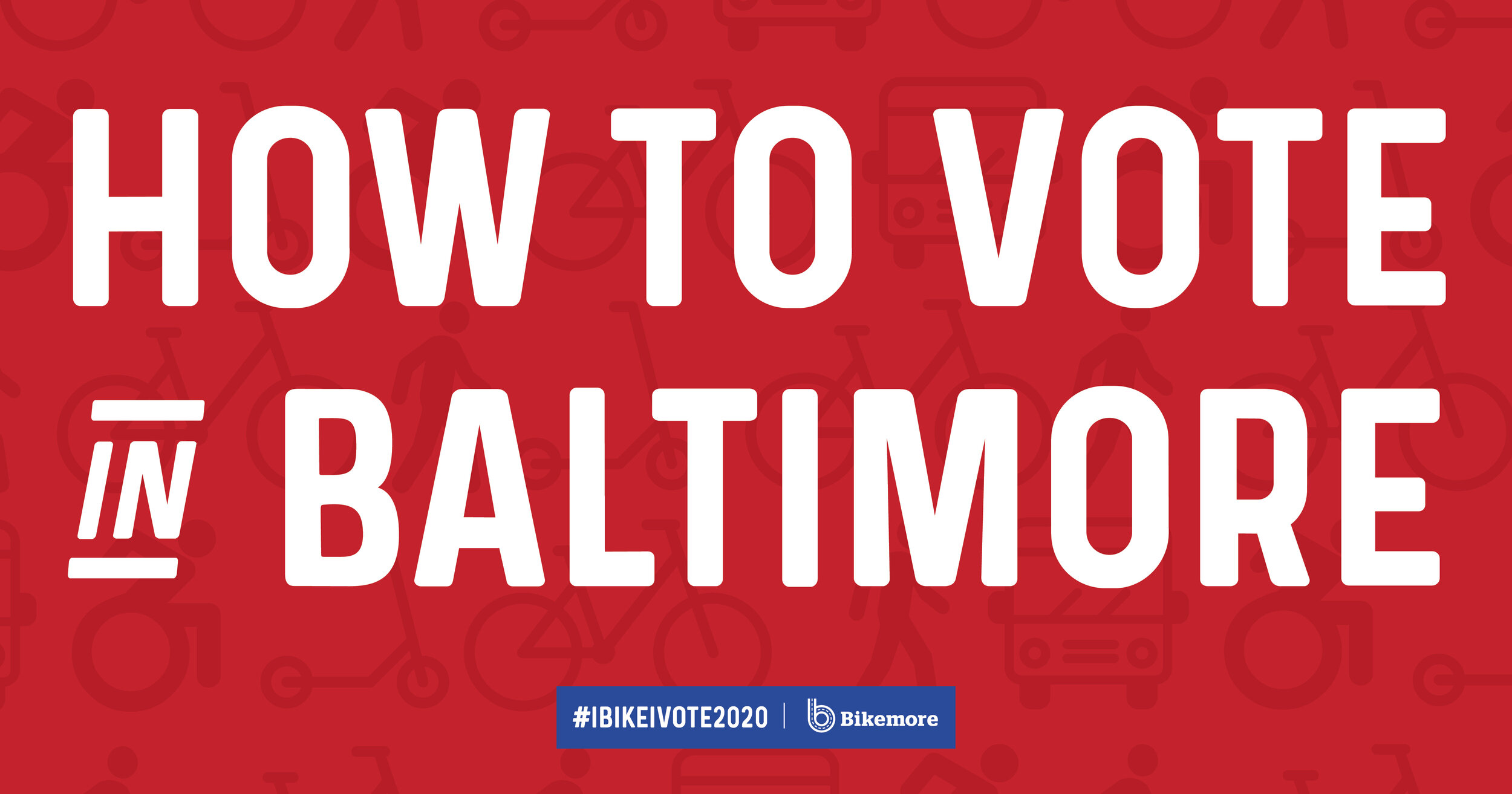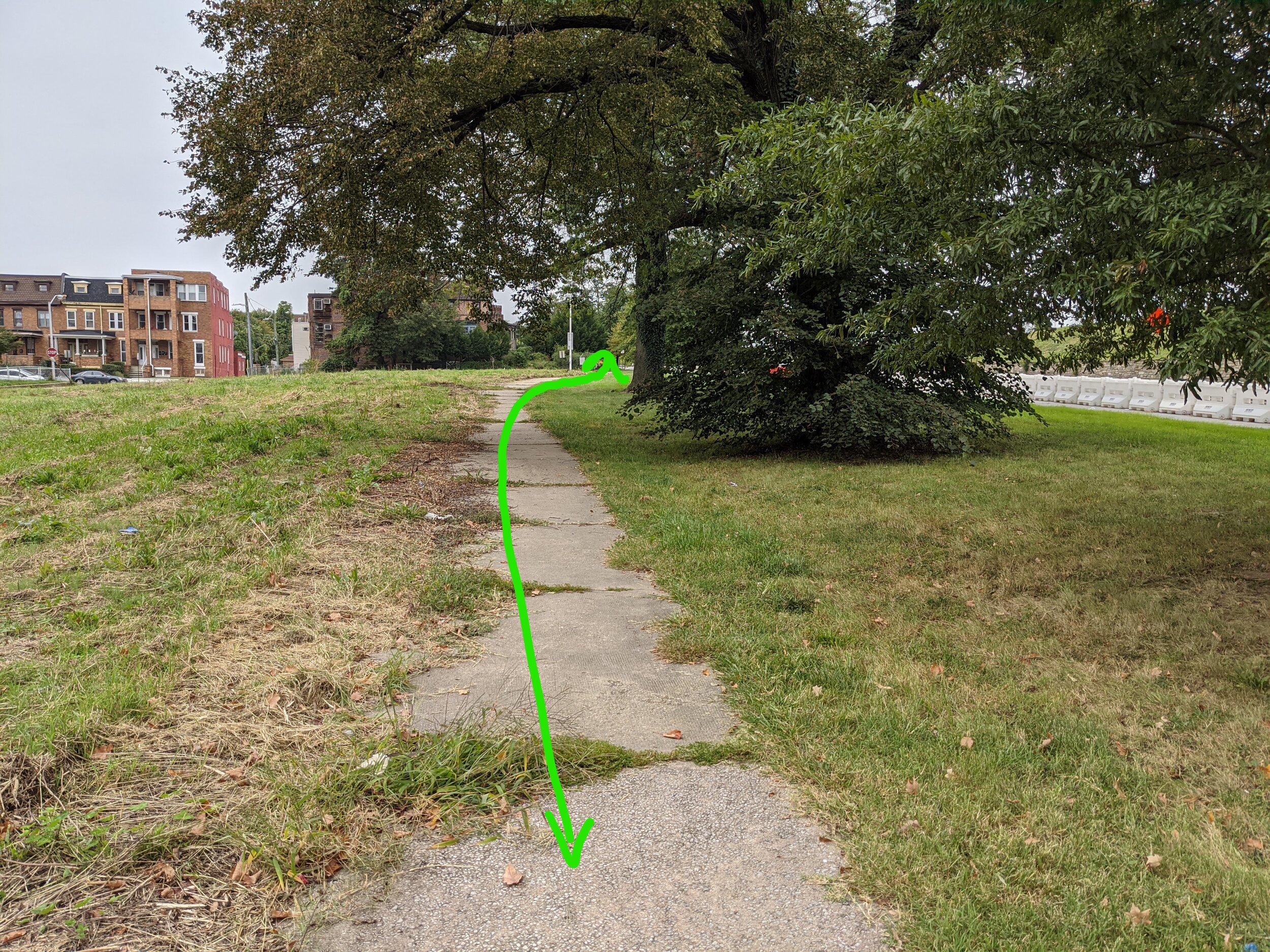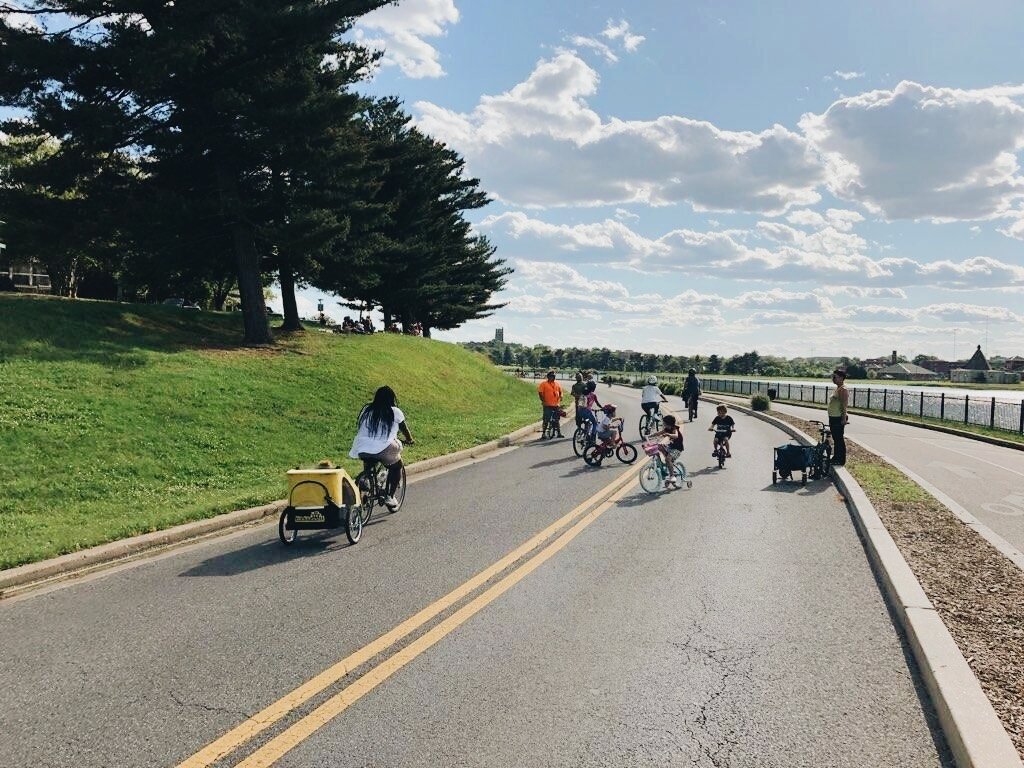The 28th St. Bridge before and after Installation of the Big Jump pathway.
From Liz Cornish, Bikemore Executive Director:
Three years ago, following a long meeting, I walked from Baltimore Community College to my house in Charles Village. I walked down Park Heights. Across the parking lot at Mondawmin Mall. Headed into to Druid Hill Park and went home across the 28th Street Bridge. Knowing that in the months to follow construction would begin on the Big Jump, a separated walking and biking path that connects two neighborhoods divided by a highway, I wanted to document my walk along the tiny sidewalk next to high speed traffic once more.
When these photos and video popped up on my phone this week I was reminded how challenging it was to get this project installed and the community push back it received in those first months. And most importantly how noisy and scary it used to be to walk along the highway. By all measures, the Big Jump has been a big success. Even now with detours to accommodate the remaining construction on the Reservoir, this safe place to walk and bike has become essential to those who need to walk, bike, scoot, or use their mobility device to go in between Reservoir Hill and Remington.
One of the challenges of the Big Jump is keeping it free of trash and debris. Trash from cars, debris from the overpass above, all collect in the little channel between the barriers and the sidewalk. Despite repeated requests, the City has never put it on its regular street sweeping schedule. Now with DPW services diminished due to the pandemic, it seems even less likely we will see regular cleaning of the well used path.
Last weekend people from across Baltimore gathered and held a massive clean up on the Big Jump. This was all community led. On behalf of Bikemore, I wanted to say thank you to everyone who came out and pushed a broom and hauled some trash.
The Big Jump was my big dream from the moment I moved to Baltimore in 2015. For every academic paper or panel discussion on the harm caused by the Jones Falls Expressway, every architectural rendering of what could be, I knew there was a “right now” solution to improving safety and connectivity between two disparate parts of the City. Many people felt the same and shared that vision. And thanks to the hard work of folks like Caitlin Doolin with Baltimore City DOT, Jon Laria Chairman of the Mayor’s Bicycle Advisory Commission, Councilman Leon Pinkett and with critical early support from People for Bikes, it came to be.
But it has stayed, despite all odds, because of people like you out there riding everyday.
We take care of each other when we take pride in the things that keep us safe. Transformative change has to last beyond the initial excitement. That requires the commitment of people beyond those of us who have chosen this cause as our profession. And volunteers cleaning up the Big Jump shows how the movement for streets built for people has grown: in a few years, the Big Jump went from some idea in a grant application that faced major backlash, to a treasured resource the community feels compelled to take care of. What an amazing harbinger for Complete Streets.
Thank you to everyone who organized and contributed to last weekend’s clean up of the Big Jump. Nothing feels better than when your mission lives completely outside of yourself. And we are all deeply grateful for each and every one of you that continues to fight for bikes, be it testifying at City Hall or pushing a broom down a bike lane.


